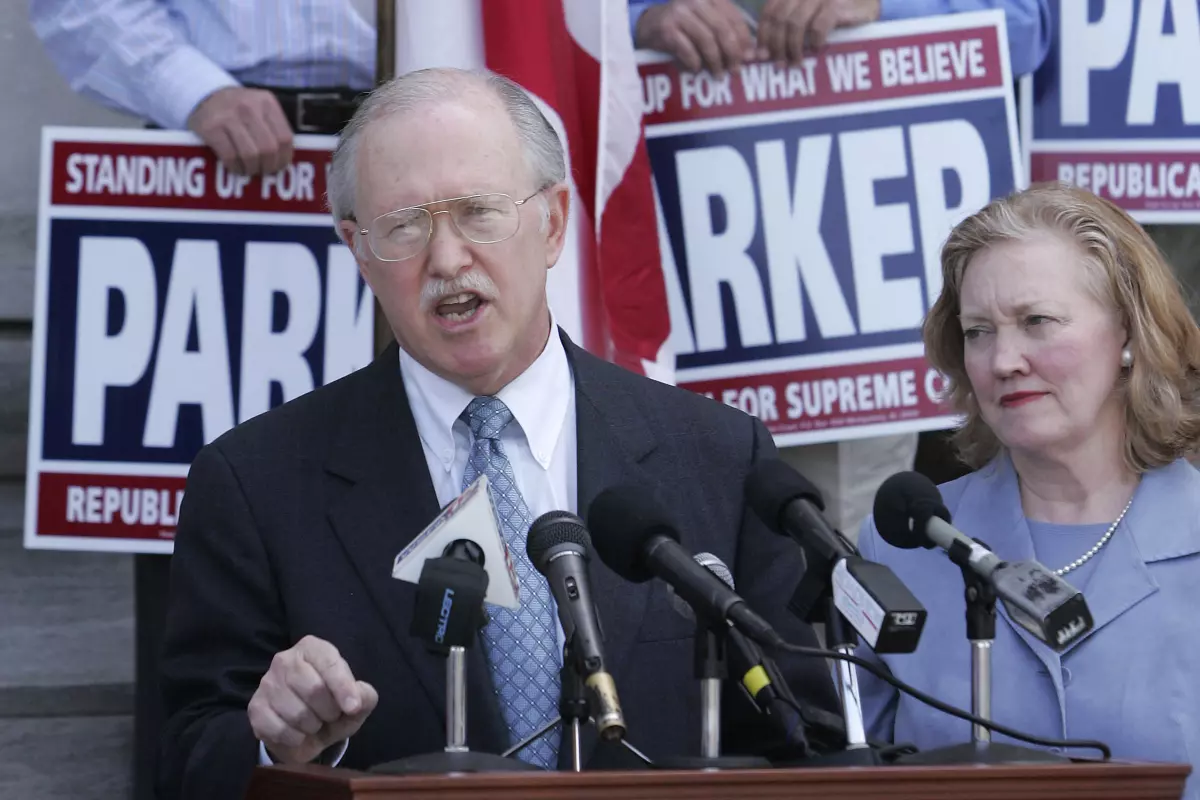On Friday, Feb. 16, the Alabama Supreme Court announced in a new ruling that frozen embryos are to be recognized as children and that those who destroy or harm them can be held liable for “killing” them. This decision is one that, once again, puts the argument of when life begins back in the national spotlight. It’s an argument that reproductive rights advocates say could have drastic and terrifying measures for the hundreds who seek treatment in Alabama for infertility annually.
The court’s ruling came as a result of two lawsuits filed by three different sets of parents within Alabama. According to court documents, the parents underwent in vitro fertilization (IVF) to assist with pregnancy and then decided to freeze the remaining embryos. They alleged that in Dec. of 2020, a patient was able to access the room through an “unsecured doorway,” and remove several embryos from the cryogenic nursery. When doing so, they freeze-burned their hands causing the patient to drop the embryos on the floor making them no longer viable, or according to the Alabama Supreme Court, killing them.
The ruling has left both people undergoing IVF treatments as well as those who administer them completely in the dark. Clinics and health centers have already begun to stop treatments with the University of Alabama Birmingham health center suspending treatments as a result of the ruling. The University went on to issue a statement saying that they had to “evaluate the potential that our patients and our physicians could be prosecuted criminally or face punitive damages for following the standard of care for IVF treatments.” The Center for Reproductive Medicine at Mobile Infirmary shared in a statement that they too would be pausing their IVF treatments.
The parents suing for wrongful death were originally dismissed by a trial court that found that “cryopreserved, in vitro embryos involved in this case do not fit with the definition of a ‘person’ or ‘child’.” In a shocking turn of events, Alabama’s Supreme Court overturned the ruling highlighting that “extrauterine children” are, in fact, children and are protected in the state under the Wrongful Death of a Minor law.
Although this ruling doesn’t ban IVF, it’s the first case in the U.S. that says that frozen embryos are considered children as this ruling could have massive impacts on how fertility treatment in Alabama or states that follow in their footsteps operate going forward. One of the potential impacts critics address about this ruling is liability costs within treatment facilities that could skyrocket due to the Supreme Court’s decision, ultimately making it financially impossible for many families to access IVF.
Within the Alabama Supreme Court, Justice Greg Cook was the only one who wrote a dissenting opinion within the case. He expressed that, “No rational medical provider would continue to provide services for creating and maintaining frozen embryos knowing that they must continue to maintain such frozen embryos forever or risk penalties under the Wrongful Death Act claim.”
The court not only reflected a lack of basic understanding of IVF and the treatment process but they seemingly could not corroborate all of their facts. When making his judgment, Chief Justice Tom Parker noted that in Australia and New Zealand their ethical standards state that physicians typically create one embryo at a time. Again, this is simply not the case. There are no rules or regulations in Australia that prohibit the creation of numerous embryos. Justice Parker seemed to confuse this with the discouragement of transferring multiple embryos at one time. When referring to Australia, Justice Parker appeared to leave out the fact that the incredible IVF outcomes in Australia are due to use of frozen embryo transfer cycles, the same procedures that are now under scrutiny in Alabama.
In the days following the ruling, many organizations have come out against the court’s decisions. The Alabama Medical Association (AMA) noted that the court’s ruling would cause “enormous potential for civil liability” for specialists as embryos can be damaged or non-viable at almost any part of the IVF process. Additionally, the court’s ruling means the parents no longer have the option to discard embryos for any reason such as the death of a spouse, divorce and more. This means that these embryos could potentially remain in cryogenic facilities “even after the couple’s children, grandchildren, and even great-grandchildren have died” or else IVF facilities can be held liable under Alabama’s law.
When speaking with The New York Times, Barbara Collura, the president and CEO of Resolve, stated that one in six families struggle with infertility issues. Collura went on to explain that the courts “didn’t say IVF is illegal, and they didn’t say that you can’t freeze embryos. It’s even worse – there is no road map.” In standard IVF treatments, they extract as many eggs as possible and fertilize them before freezing where typically they only transfer one embryo into the uterus at a time to increase the viability of a successful pregnancy. Collura posed the question “What if we can’t freeze them, will we hold people criminally liable because you can’t freeze a ‘person.’”
Fertility specialists and advocates alike are not the only ones horrified by the ruling. Reproductive scientists too have come out against the court’s decision stating that it was a “medically and scientifically unfounded decision.” Dr. Paula Amato, the president of the American Society for Reproductive Medicine, stated that the court’s ruling that a frozen embryo within a fertility clinic freezer should be acknowledged and recognized as equivalent to a fetus in a womb or an existing child is simply not true with Amato stating that “science and everyday common sense tell us they (frozen embryos) are not.”
This ruling is a glaring reflection of the Alabama Supreme Court’s ignorance surrounding IVF treatments and its basic process. It does not consider that not all of the eggs collected fertilize, not all of the fertilized embryos are of good quality, not all fertilize normally and routinely those poor quality or non-viable eggs are discarded. The court’s decision directly prohibits this action despite it being routine in IVF proceedings.
In interviews conducted by The New York Times with a group of people undergoing IVF treatments in Alabama, it was clear that confusion wasn’t all they were feeling, they were angry. The court’s ruling has left women and couples in the state with no answers and no clarity moving forward. Doctors have decided to stop administering IVF treatments because of the risk of criminal charges, clinics are no longer accepting any new IVF patients, and now those who need to access the treatments may be forced to look elsewhere.
It took all of a week before other elected officials followed in the direction laid out by Alabama’s Supreme Court ruling. On Wednesday, Feb. 28, Republican Senator Cindy Hyde-Smith blocked the expedited passage of a new bill. A bill that would establish and enforce federal protection for IVF and other fertility treatments. Smith rejected the approval of a bill that would establish accessing IVF as a federal right, noting that the bill was a “vast overreach.”
In the years since the overturning of Roe. v. Wade, women in this country have slowly watched their reproductive rights dwindle away. Reproductive rights are dictated by one religion, a religion not everyone subscribes to. Doctor David Barnhart once said, “You can love the unborn and advocate for them without substantially challenging your own wealth, power, or privilege, without re-imagining social structures, apologizing, or making reparations to anyone. They are, in short, the perfect people to love if you want to claim you love Jesus, but actually dislike people who breathe.”
This notion of separating church and state has, in recent years, been thrown out the window. The Alabama Supreme Court’s ruling was one based solely on religious belief and opinion, beliefs and opinions that don’t encompass or reflect the ones held by everyone in the state. This ruling has many wondering, what’s next to go?








